Archaeology in Villasimius
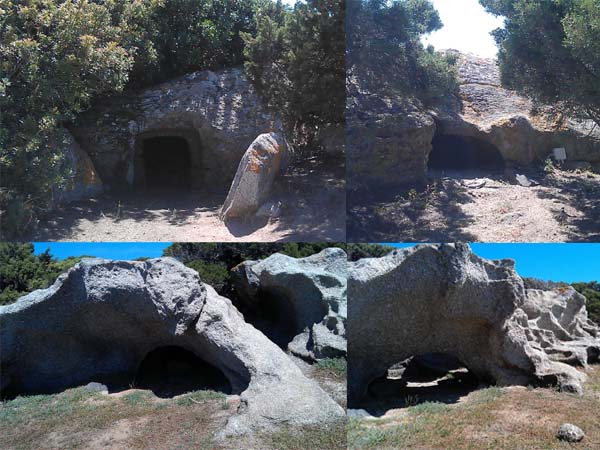
Archaeology in Villasimius: collage of photos of Domus de Janas of Rice Beach, by Nicola Piscedda.
The best excursions of archaeology of Southeast Sardinia. Villasimius is famous for its beaches, but also from a historical and archaeological point of view is a very interesting area.
Surely our zone has been inhabited since the Neolithic period, from about 6000 B.C. as witnessed by the remains of Neolithic settlements in the area of Capo Carbonara. Among the oldest evidence of human presence in the territory we find the Domus de Janas of Riso beach, dated to the culture of Ozieri of the fourth millennium A.C., these tombs have a very rare type with a megalithic corridor of access before the entrance of the tomb. The largest of the surviving domus graves is composed of two cells and of a quadrangular access door.
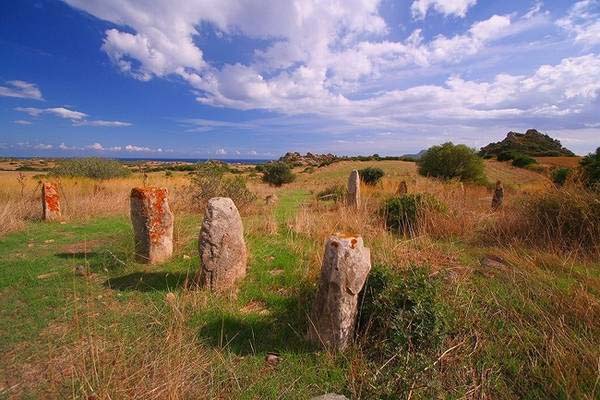
Alignments of menhirs of Cuili Piras
More Domus de Janas are located in the tourist village of Monte Nai (Castiadas). In the same area, there are the extremely interesting alignments of menhirs of Cuili Piras, dated to 3000 A. C. and composed of 53 menhirs placed to form straight or curved alignments with a light astronomical observatory, and some authors suggest cultural contacts with the megalithic populations of Britain or Stonehenge. In neighboring Pranu is Scalas and Piscina Rei sites other alignments are respectively 43 and 22 menhir. In the area there are also various protonuraghi similar to culture Torrean of Corsica.
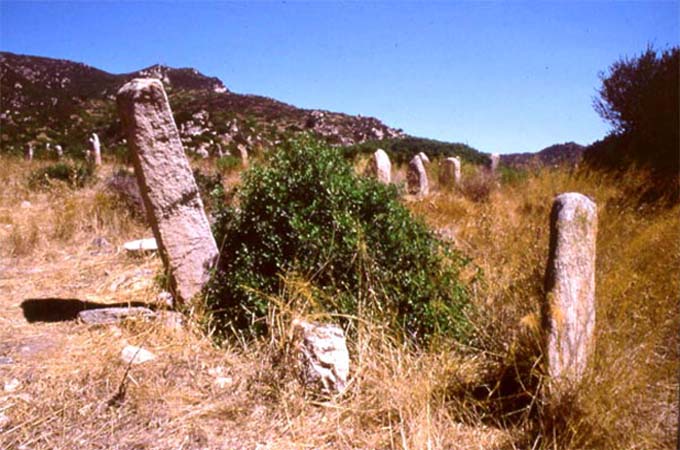
Archaeology in Villasimius: alignments of menhirs of Cuili Piras.
In the territory of Villasimius were reported by La Marmora various Tombs of the Giants, of which survive the remains of one, located near the restaurant “Su Giganti”, between Porto Sa Ruxi and Campus beach. The nuraghi reported in the area are numerous, ranging from Solanas, where there would be remains of a polylobated nuraghe, Nuraghe Giardone (near Villaggio dei Mandorli , with associated a megalithic gallery grave), two Nuraghes in Cuccureddus (700 m . from the residence), another in the highest point of the hill of Campulongu (350 m. from the residence), some maybe in the hills behind the golf, the nuraghes of Is Traias, Manunzas and Baccu’e Gattus.
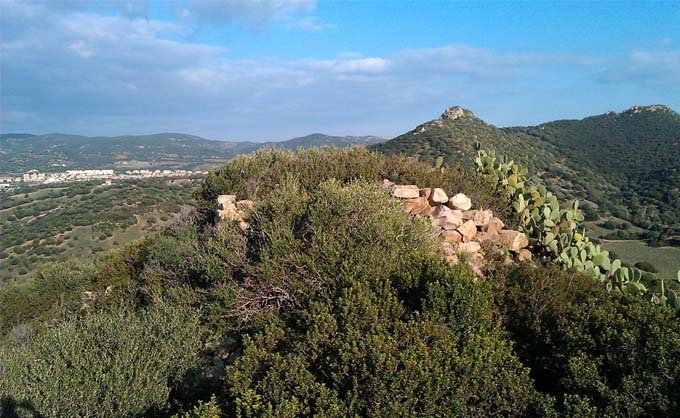
Archaeology in Villasimius: Two nuraghes of Cuccureddus, photos of Nicolas Piscedda. On the right you can see the background of Campulongu nuraghe
The best preserved can be found by going to Castiadas. The first of these is the nuraghe polylobate S’Omu e S’Orcu near Punta Santa Giusta and at Peppino rock, the largest of Sarrabus, consists of a central tower with a donjon trilobed, surrounded by a curtain wall of which remain five towers and a courtyard that incorporates part of the nuragic village surrounding the complex. For the moment this nuraghe is abandoned, but it is expected his excavation and recovery.

Nuraghe s’Omu e s’Orcu
Probably Nuraghe Asoru was also a complex one, consisting of two smaller towers e a donjon, of which today there remains a height of 7 meters, but in the past was probably exceed 10 meters. The is easily visible from the S.S. 125 (is located at km. 51).
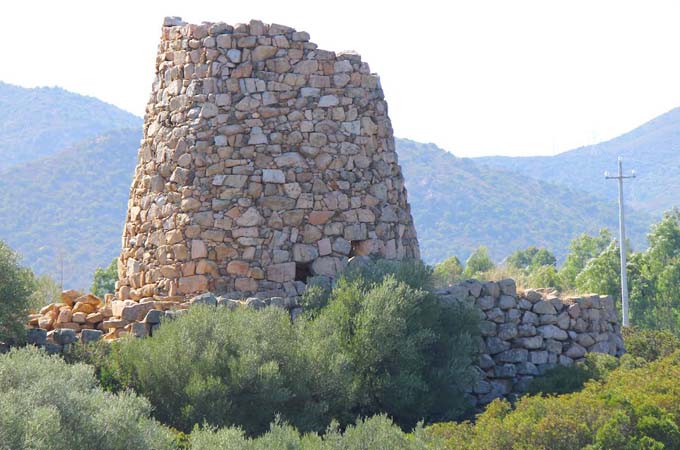
Nuraghe Asoru
Very interesting are the Phoenician and Roman archaeology of the Villasimius area, concentrated near the area of Cuccureddus On one of the crests of Cuccureddus was the Phoenician temple of Astarte, with a staircase leading down to the sea at the mouth of the riu Foxi, which had to form a natural harbor Constructed from the sixth century and destroyed by fire, probably Carthaginian era, of this period three rooms were found, easily recognizable on site and some finds preserved in the museum of Villasimius: various seals of official documents of the temple, some with a clear Egyptian influence, and many ex- vote, which range up to Roman times, when the temple was rebuilt.
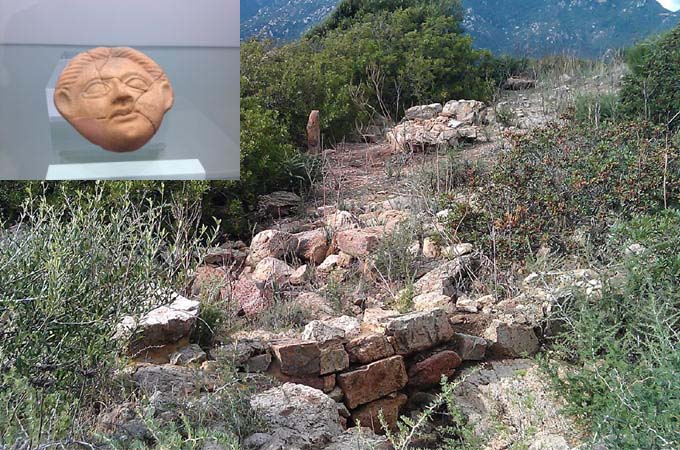
The remains of the Phoenician temple of Astarte in Cuccureddus (photo by Nicola Piscedda) In the box one of the votive offering in the Museum of Archaeology of Villasimius (photo by Elvira Marrone)
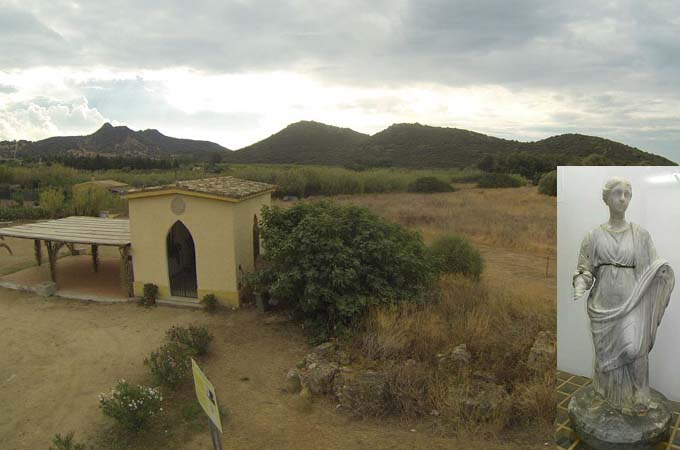
The country church of S. Maria and, beside, the archaeological remains of the Roman calidarium. In the box the roman statue that was considered a virgin Mary.
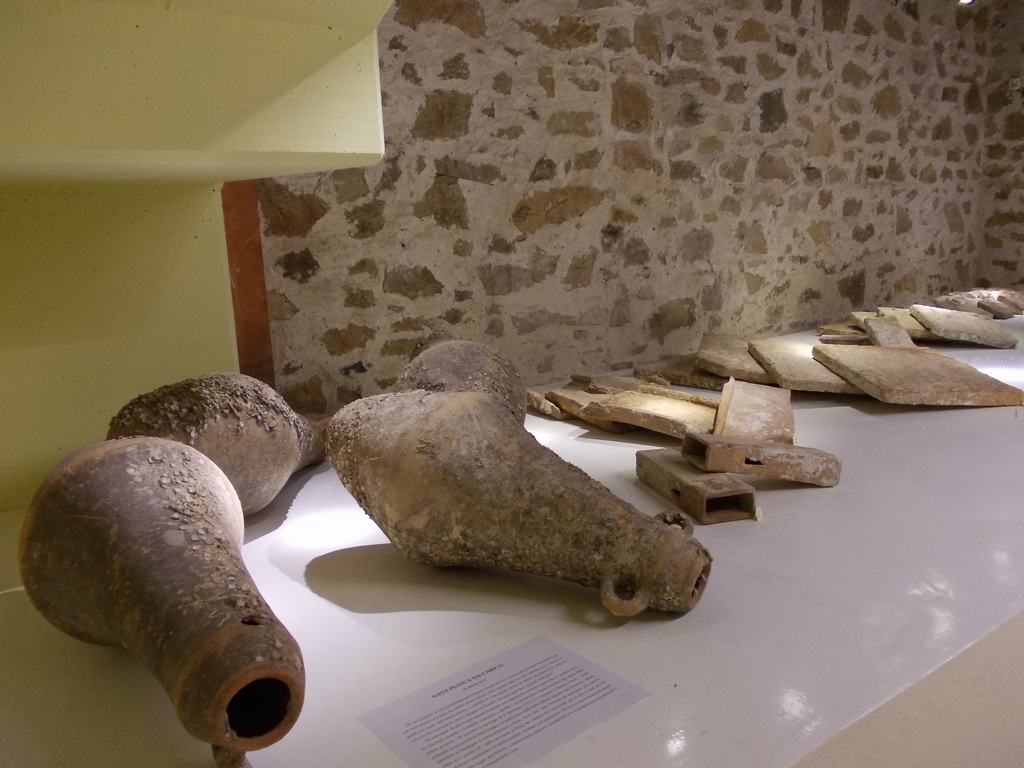
Some findings of the Museum of Archaeology of Villasimius. Photos of the web page of the museum.
For information you can contact:
Direction: 070.7930291
or the Guide Office: 070.7930290.
| Fax 070 7928041 |
| [email protected] |
